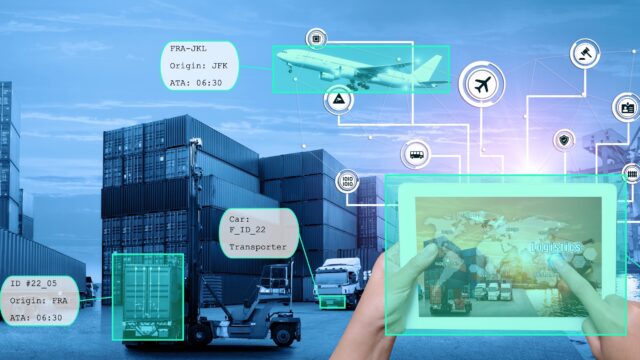
Introduction
Aviation is no stranger to overcoming adversity. In fact the industry is more robust than most, given how vulnerable it can be to economic downturns. Then there are security threats, weather extremes, general world events, and obviously, global pandemics. There’s no doubt that plotting a route out of the biggest global health crisis of the last 100 years will be dominating airline executive’s waking thoughts, but the reality remains; there are other challenges that must be addressed.
Drones, officially named Unmanned Aerial Vehicles (UAVs) are high on the list. Here at M2P we have seen an increasing demand for the use of drone protection systems. Our clients can see the constantly emerging risk, and are taking pro-active steps to protect their people, customers, assets and finances. We share our learnings and perspective on this critical topic, but first, let’s look at the most well-known airport drone incident to date. Who can forget the drone activity at London Gatwick Airport in December 2018? The personal impact was enormous; over a 36-hour period, the Christmas plans of approximately 140,000 passengers were ruined and 1000 flights were cancelled. Why? Because of reported drone activity within one kilometre of the airport boundary.
It has been estimated that those 36 hours cost the airport and airlines an eye-watering £50 million.
As the industry feels its way through the covid crisis, it will be more vulnerable than ever to incidents that cost money, and now there are no deep pockets to foot the bill.
The Threat
Drone usage has the potential to be catastrophic. Drone technology has advanced dramatically in recent years, with greater usability promoting greater usage. The ensuing mass-production has improved affordability meaning the technology is now much more accessible to the masses, with the result that drones can easily get into the wrong hands. On the whole, drone usage by the general public is enjoyed for innocent reasons such as capturing breath-taking holiday footage, or by businesses involved in survey work, or professional photography, but the sad reality is that drones can serve much more malicious purposes too. Most publicly available drones have a built-in GPS receiver that prevents them from flying into restricted airspaces. However, this system is relatively easy to remove or circumvent, and self-made drones can also be built. Drones can cause devastating damage to an aircraft; ingested into engines, breaking cockpit windows, even blocking the movement of control surfaces such as ailerons and rudders. As a consequence, when a drone is sighted in the vicinity of an airport, operations must stop until the threat has been eradicated. And drones present other threats; a large oil facility near the Saudi Arabian city of Jizan was attacked by drones in July 2020. Can we not legislate against the use of such drones? Sadly the legal framework covering the use of drones has failed to keep pace with technological development. People can be indicted for causing chaos, but cannot currently be stopped from purchasing or otherwise obtaining the means (i.e. drones) by which chaos is caused.
How Can Aviation be Protected from the Threat of Drones?
There are three groups who can take action against the use of drones; the airports themselves, local authorities, and drone manufacturers. As the situation stands, drone manufacturers and local authorities are not able to solve the threat, so the responsibility to take action lies with the airport.Most airports do not have a drone detection system which means the majority of incidents are reported by pilots after a near miss has occurred. The following options currently exist to detect drones before they become a risk:
- Radar – Detects the presence of drones by their radar signature, which is generated when the drone encounters radio frequency pulses emitted by the detection element. These systems often employ algorithms to distinguish between drones and other small, low-flying objects, such as birds.
- Radio Frequency – Detects, locates, and in some cases identifies nearby drones by scanning for the frequencies on which most drones are known to operate.
- Electro-optical – Identifies and tracks drones based on their visual signature.
- Infared – Identifies and tracks drones based on their heat signature.
- Acoustic – Detects drones by recognizing the unique sounds produced by their motors.
Radio Frequency Scanning is Best for Airports
Within an airport environment radio frequency scanning is a leading choice; drones can be detected at any height, and the pilot’s position can be localized using simple triangulation techniques. However, it is important to note that this solution might not always detect autonomous or pre-programmed drones.Electro-optical or acoustic-based systems have proved impractical as the number of cameras and microphones needed to cover the whole space of an airport are high, while the detection rates have been disappointing compared with other technologies.
Early Detection Must Lead to Early Interception
The options above may indicate that a drone is present or nearby but the threat has not been removed. The risk to safety and security remains high, and airports will need to be temporarily closed with massive economic and disruptive impact.What is required beyond detection is interception. Early drone interception will be reliant on the use of one of the following technologies:
- GNSS Jamming – Disrupts the drone’s satellite link, such as its Global Positioning System (GPS) or Global Navigation Satellite System (GLONASS), used for navigation. Drones that lose their satellite link will usually hover in place, land, or return to home.
- Laser – Destroys vital segments of the drone’s airframe using directed energy, causing it to crash to the ground.
- Projectile – Employs regular or custom-designed ammunition to destroy incoming unmanned drones.
- Collision Drone – A drone designed to collide with the hostile drone.
- Nets – Designed to entangle the targeted drone and/or its rotors.
Radio Frequency Jamming is Best for Airports
Radio frequency jamming will stop any drone controlled via radio transmissions (even if mobile networks or other public services are in use). Consequently, most vendors of anti-drone systems focus on a combination of radio frequency scanning and jamming as their primary detection and interception method.Unlike GNSS jamming this option doesn’t interfere with other aviation-related systems such as radio communications, neither does it cause collateral damage to people or facilities around the airport as both are non-destructive interception methods.On the other hand laser, projectiles, collision drones and nets are destructive interception methods, which are not viable in a civilian airport environment due to the associated safety risks including the potential for debris landing on the runways and taxiways.
What are the Challenges when Implementing an Anti-Drone System?
With more than 100 vendors, selecting a provider in the first instance can be challenging, and as this market is relatively young, learning through the experience of others is limited.The biggest challenge is the evaluation of different systems, and choosing the option best suited to the needs of the airport, while complying with local regulations.
Is the Investment in a Drone Protection System Worth it?
For major airports, a drone protection system is absolutely worth it, and for most medium-sized airports the answer is also yes. The implementation and running costs of such a system would be far less than that of a temporary airport closure. This level of investment and the critical nature of its use requires careful selection to ensure the best technology solution is procured – an area of expertise within M2P. Small and regional airports may consider this option based on their unique needs. Above all else, drones are a risk to safety and security. Regardless of the potential economic disruption caused by an operational disruption, the public will be looking to the aviation industry for reassurance that they are protected from this ever-growing technology, and that they can travel with confidence.




